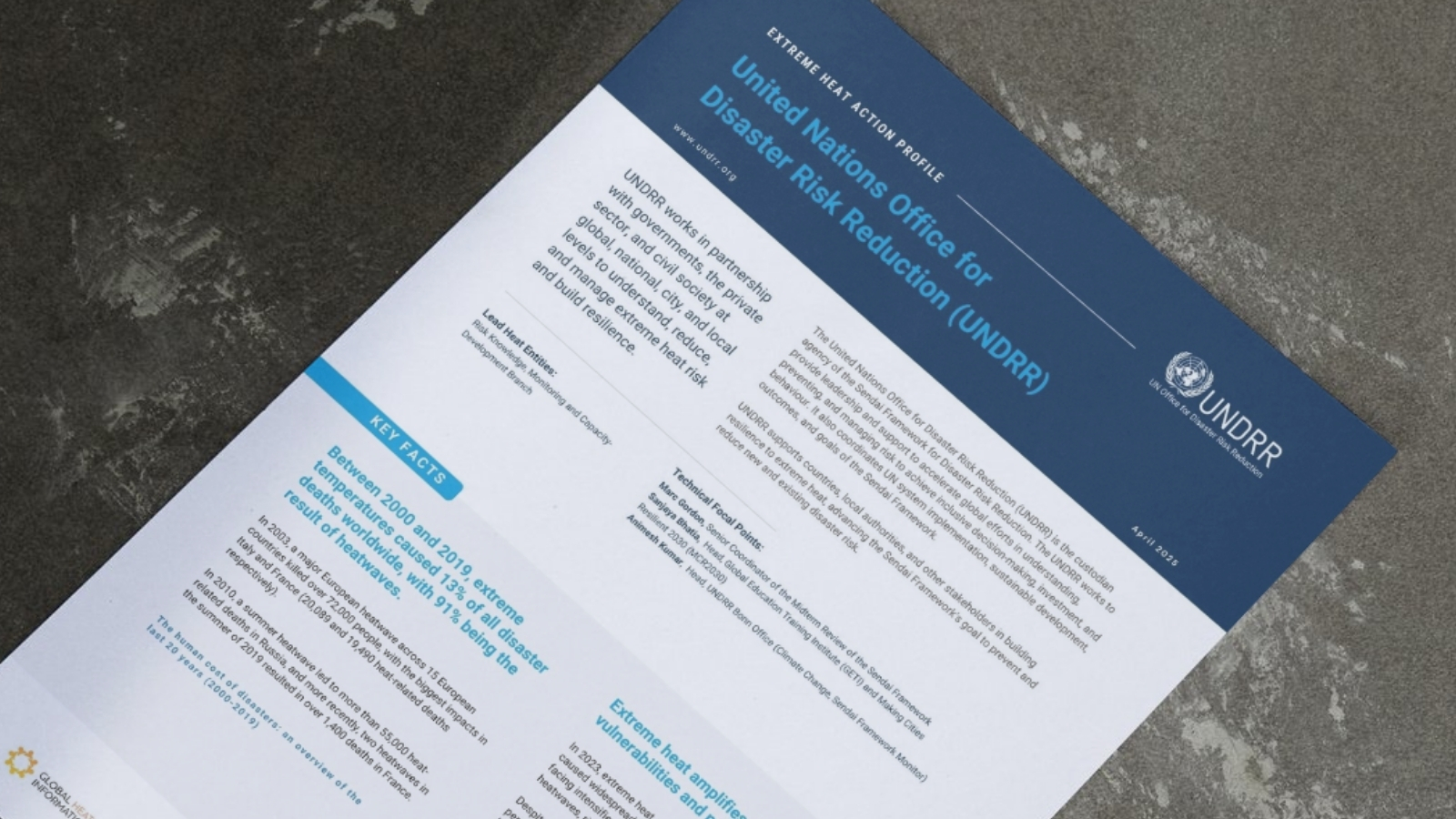New profile series maps action on Extreme Heat across the UN system
Published: June 2, 2025
..
In support of the United Nations Secretary-General’s Call to Action on Extreme Heat, this new publication series developed by the Global Heat Health Information Network highlights the findings and work of UN agencies and international organizations on extreme heat.

The United Nations (UN) Secretary-General’s Call to Action on Extreme Heat (2024) delivered a critical message: the rapid rise in dangerous extreme heat calls for urgent international cooperation to address risks.
Extreme heat touches every sector, at every scale – diminishing labour productivity, disrupting education, degrading infrastructure, overburdening health systems, and invariably widening inequities. Solutions are available, but efforts must leverage innovation and integrated action from all sectors of society.
UN agencies and international organizations play a key role in advancing both the understanding of extreme heat impacts, and driving scalable, coordinated heat action.
Recognizing the need for a unified response, the Global Heat Health Information Network mapped the heat-related work of 16 UN agencies and international organizations. They are launching a set of 16 Heat Action Profiles this week on the International Federation of Red Cross and Red Crescent Societies’ Heat Action Day (2 June) – helping to raise awareness of worldwide heat risks and showcase the broad scope of work underway to address it.
These quick reference profiles aim to uncover priorities and perspectives across sectors, help enhance opportunities for collaboration and encourage alignment and leveraging available resources to enable faster, more effective heat action.
The profiles are part of a broader project led by WMO and UNDRR supporting Heat Risk Governance, which brought these agencies together in December 2024.
What’s Included?
Each profile includes the following information, developed in collaboration with technical focal points of the organization:
- The organizational mission, describing the unique role the organization plays in addressing extreme heat.
- Lead heat entities and technical focal points for heat-related work.
- Key facts and findings on the impacts of extreme heat on the organization’s sector
- Key initiatives that address extreme heat.
- Heat specific resources and references, including key publications and tools.
- Foundational and governing documents, such as resolutions, conventions, or institutional strategies, that ground and support work on extreme heat.
- Sustainable Development Goals (SDGs) most relevant to the organization’s work on extreme heat.
These Heat Action Profiles highlight the critical collective actions being undertaken by UN and international organizations in confronting one of the most pressing risks of our time. By understanding who is doing what, we can enhance coordination and accelerate integrated action, strengthen resilience, and drive global progress on extreme heat.
The Heat Action Profiles include content collected up until December 2024. Annual updates are planned to maintain relevancy.
Download the Profiles
- World Meteorological Organization (WMO)
- World Health Organization (WHO)
- United Nations Office for Disaster Risk Reduction (UNDRR)
- International Labour Organization (ILO)
- United Nations Children’s Fund (UNICEF)
- IFRC / Red Cross Climate Centre
- Food and Agriculture Organization of the United Nations (FAO)
- United Nations Development Programme (UNDP)
- United Nations Office for the Coordination of Humanitarian Affairs (OCHA)
- United Nations University (UNU)
- World Food Programme (WFP)
- International Organization for Migration (IOM)
- Group on Earth Observations (GEO)
- United Nations High Commissioner for Refugees (UNHCR)
- United Nations Educational, Scientific and Cultural Organization (UNESCO)
- UN Environment Programme (coming soon)
Contact: info@ghhin.org